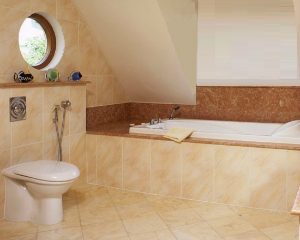Fire Safety is brought to our attention each October as officials remind us to be mindful and prepared. It won’t take you very long to create a fire safety plan for your home, and it may save someone you love from an injury, even death.
I don’t mean to alarm you, but home fires are more common than we think. More Americans are killed every year from home fires than all other natural disasters combined, and most occur during the winter months. That’s partly because we’re heating our homes again, so we’re using fuels or flammables, and partly because of the holiday season. Candles, real trees indoors, wrapping paper, the use of extension cords, and just being super busy—all of the above can be a recipe for disaster.
What is important to realize is that it takes only three minutes for a residential fire to reach the point of no return, but it takes a fire department on average six minutes to respond. So it’s absolutely crucial that your have a viable escape route for you and your family. You can download a fire escape template from the National Fire Protection Association’s website, then follow their guidelines.
Using Windows for Escape
The main objective of any fire safety plan is to make sure that everyone gets out in the event of a fire. That’s why pre–planning is so critical: identify a couple of safe exit routes out of your home, map them out, and leave a copy of the map in every room.
Make sure that everyone is familiar with the route by, yes, doing fire drills! Practice does make perfect. Run a drill every so often and practice escaping the house using your routes. I can’t stress enough how important it is that everyone, including the tots, learn how to exit a burning home swiftly, safely—and without assistance.
Make sure your kids know that they must leave when there is a fire in the home and that they must never hide from the fire, from the firefighters, or from any emergency worker.
Identifying one or two ground level windows for quick egress should be part of your plan. Make sure the windows you choose are accessible to all family members, easy to open and easy to exit, such as a sliding window or even a patio door.
If your house has a second or third story (and that’s usually where the bedrooms are), you should seriously consider acquiring a permanent escape ladder. A permanent escape ladder is a terrific safety invention. Unlike a portable ladder, a permanent escape ladder (such as the PEARL® Permanent Escape And Rescue Ladder) is recessed beneath an interior window sill and is attached securely to the wall’s studs.
The ladder’s front panel can be painted to suit any color or decor, so while you may forget it’s there, it will always be ready if you need it. And because it repacks easily, you can use it over and over again for all of your practice fire drills.
Prevent and Detect
Of course, it goes without saying, prevention and detection are essential so you never have to actually use your Plan. So here are some important pointers:
• Practice safe habits: never leave candles unattended. Keep matches and lighters out of sight and out of reach of children.
• Install smoke alarms on every level of the house. Ideally, position a smoke alarm outside of every bedroom.
• Make sure that all your smoke alarms are working. Check the batteries every six months at the very least. If a smoke alarm is more than 10 years old, replace it.
• Store flammable liquids such as some cleaning supplies away from the stove.
• Store fuels such as gasoline and kerosene in a safe container outside.
• Keep a fire extinguisher handy in fire–prone areas, such as the kitchen.
• Consider installing a fire sprinkler system. It can buy you valuable time in a fire.
• Check baseboard heaters every so often. Remove objects that may have fallen on or near them.
• Always turn off portable heaters when you leave a room or before you go to bed.
Finally, make sure all family members know the sound of that alarm. And set it loud enough to wake the whole household!
Forewarned is forearmed, as they say. Now, go download that template, for goodness’ sake!



















